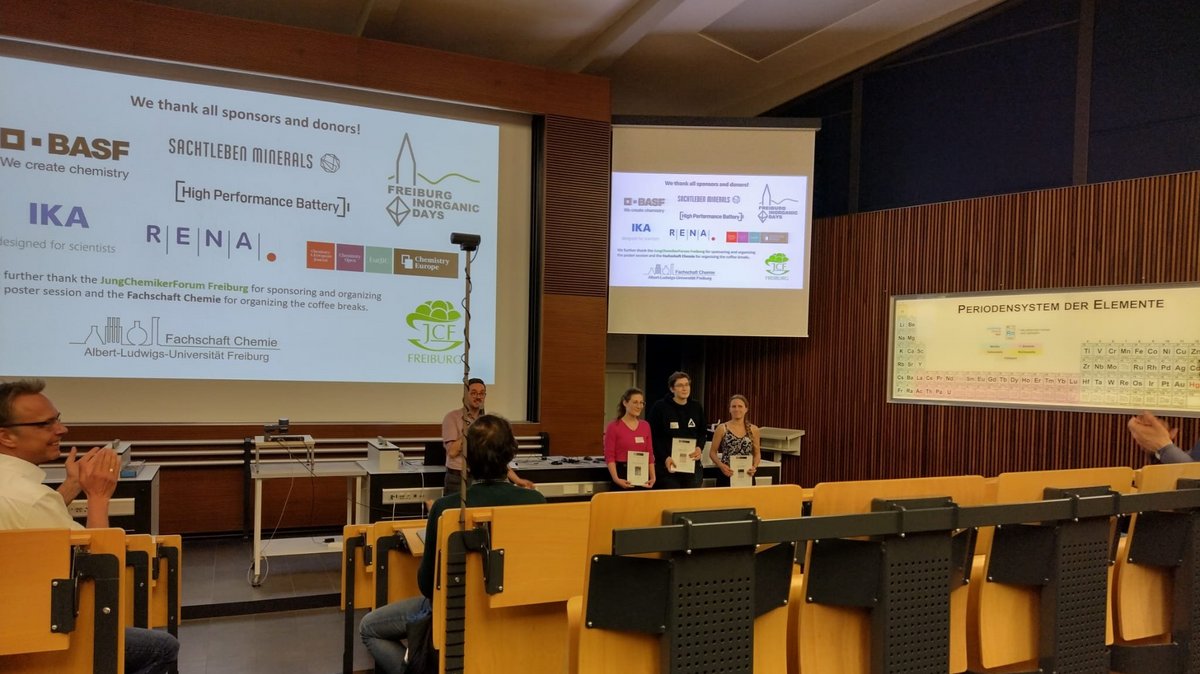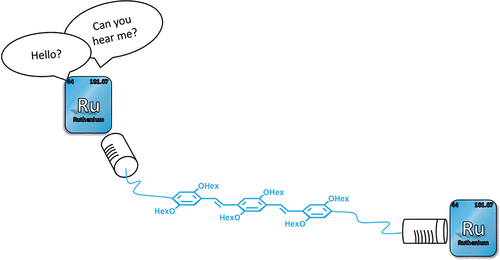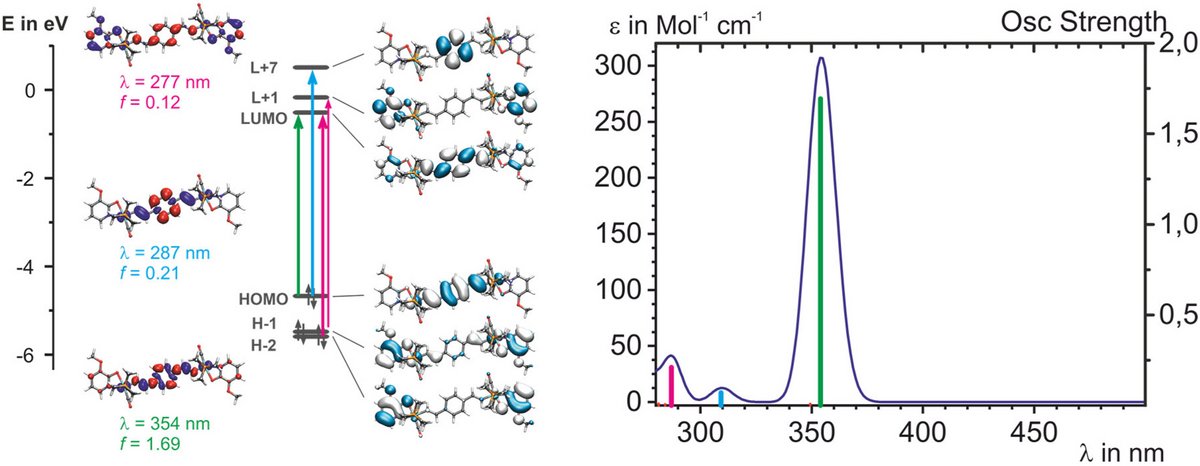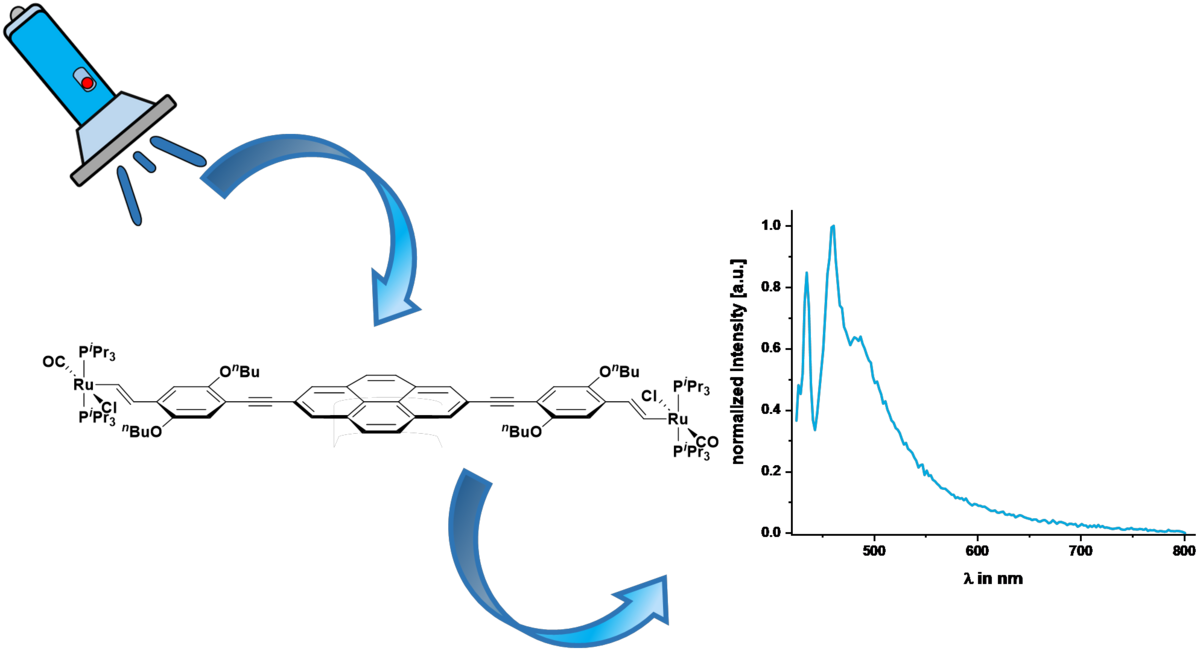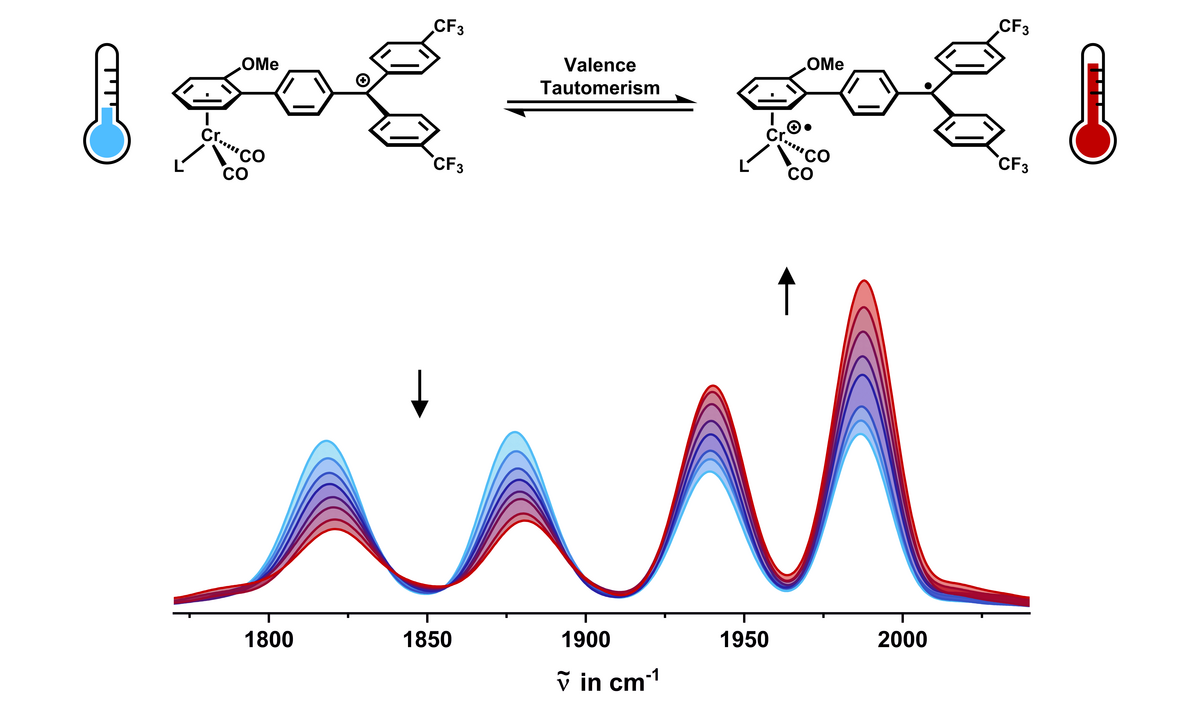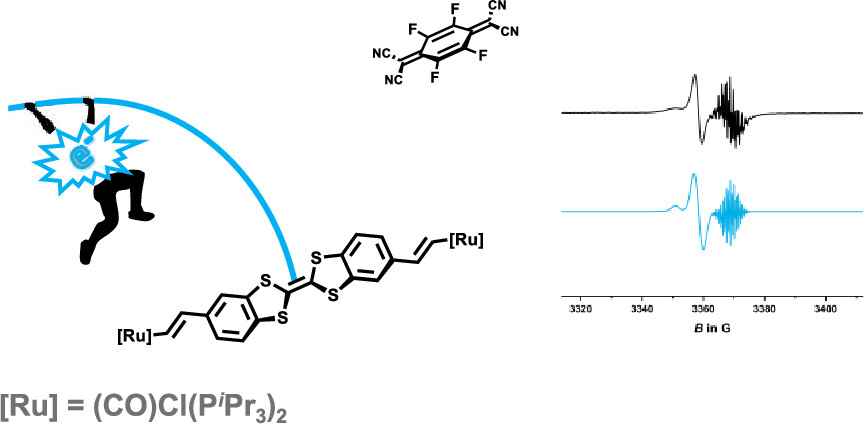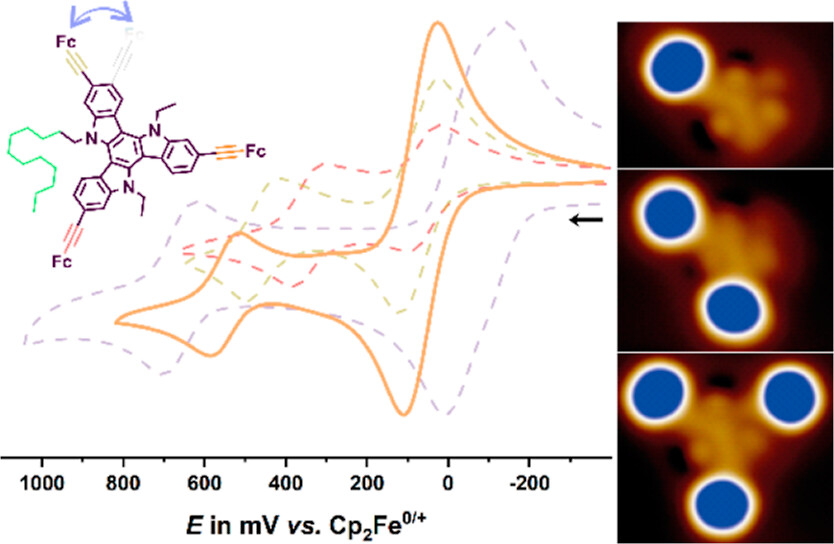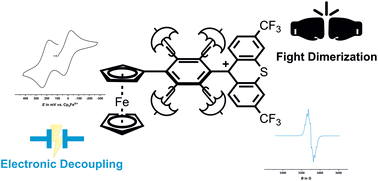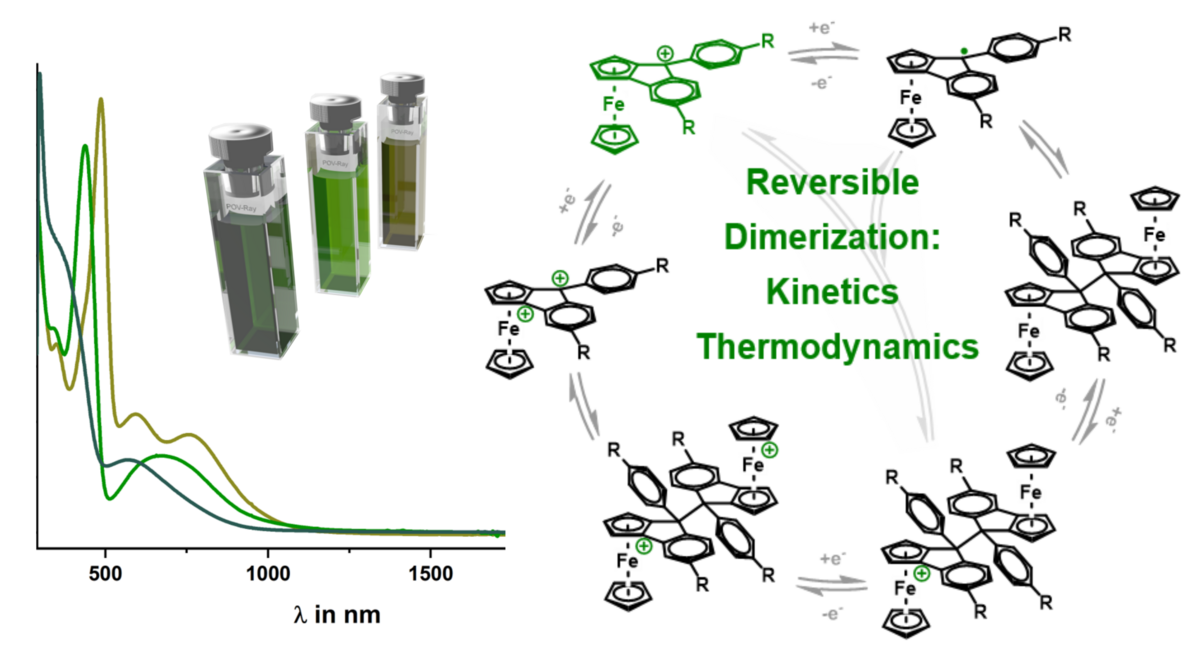
Congratulations to Larissa for her latest paper!
Three new ferroceno[2,3]indenylmethylium dyes (1+–3+) with 9-phenyl substitutions (OMe, Me, CF3) were studied. These dyes exist as mixtures of Rp and Sp enantiomers. The presence of a 9-phenyl group induces pyramidalization at the methyl carbon, creating a second stereocenter. The cationic complexes (1+–3+) exhibit deep green color and strong visible electronic absorption. Cyclic voltammetry and UV/vis/NIR spectroelectrochemistry revealed their electrochromic behavior. Temperature-dependent EPR…
Read more
